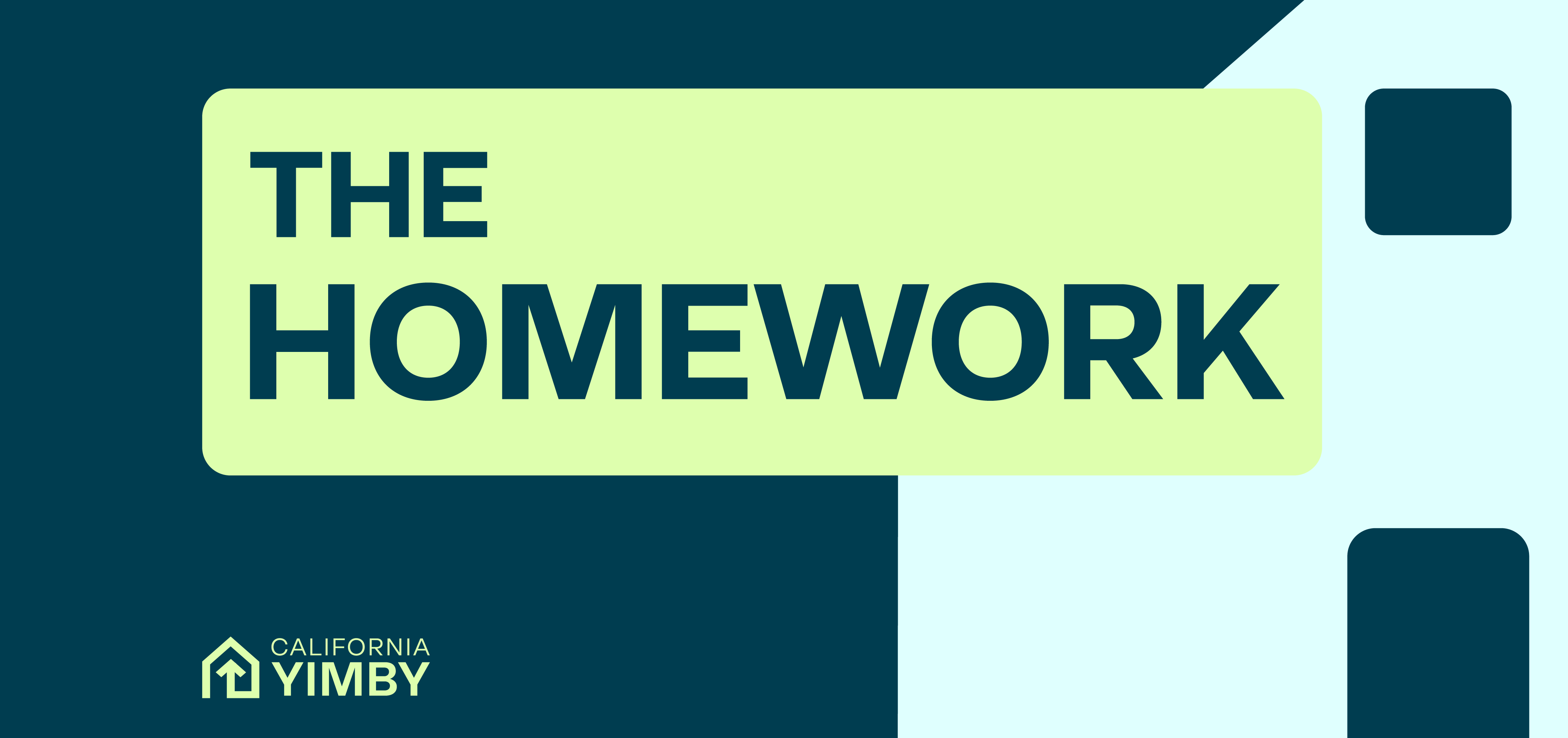The HomeWork: May 20, 2022

Welcome to the May 20, 2022 Main edition of The HomeWork, the official newsletter of California YIMBY — legislative updates, news clips, housing research and analysis, and the latest writings from the California YIMBY team.
News from Sacramento
This week, both the Assembly and Senate Appropriations Committees held their Suspense hearings to determine which bills make it to the floor for a full vote, and which bills are held in Committee. Many of California YIMBY’s priority bills were approved by their respective committees, including:
- AB 2873 (Jones-Sawyer), which will help track the demographics of the affordable housing construction workforce
- AB 2221 (Quirk-Silva), which will accelerate ADU development by clarifying ambiguities in existing law
- AB 2097 (Friedman), which will remove expensive parking mandates around transit
- SB 886 (Wiener), which will help universities build student and faculty housing faster and at lower cost by streamlining the environmental review process
Other California YIMBY priority bills that also passed are AB 2011 (Wicks) and AB 2053 (Lee), which are heading to the Assembly Floor.
All bills that made it out of the Appropriations Committee will now head to their respective Assembly or Senate floor for a vote. If passed, the bills will then be transferred to the other chamber of the house for the “second house” round of Committee hearings. Both Assembly and Senate floor votes are expected to start as early as next week.
Housing Research & Analysis
Affordable Housing Is Good for Property Values
The Urban Institute has a new research brief out on the local economic benefits of affordable housing, focusing on a case study in Alexandria, VA.
Key takeaways:
- New affordable housing projects in Alexandria increased home values within a one-block radius by 0.1%, a “small but statistically significant” increase that confirms prior research on Low Income Housing Tax Credit (LIHTC) projects.
- The effect was less pronounced when including “set-asides” or “inclusionary” affordable units in market-rate projects.
- This effect was stable in both low- and high-income neighborhoods.
Project Homekey: A Model for Addressing Homelessness?
California’s Project Homekey, a new initiative by Governor Newsom to acquire and retrofit hotels for permanent supportive housing, was hailed as a transformative solution to homelessness when it was launched in mid-2020. A new report by UC Berkeley’s Terner Center for Housing Innovation breaks down the reasons it has worked so well – and how it could improve.
Key takeaways:
- In the first round of Homekey, over $3 billion in state funding was deployed to convert roughly 6,000 rooms for permanent supportive housing, mostly from hotels and low-rise motels.
- Development costs were reduced substantially by streamlined financing structures and environmental review, with costs per door averaging $200,000 – and projected to be even lower for future funding rounds.
- California could improve on the Homekey model by providing more operating funds to maintain the supply of affordable housing in the long term.
Houser Headlines
- Martin Luther King III: Keep building affordable housing to bring American Dream closer for all
- Ensure Construction Opportunities for Minority Contractors
- Affordable-housing production needs more sugar, less vinegar
- Going Statewide to Boost ADU Development
- Why Did U.S. Cities Resegregate?
- The Right to Move Is Under Attack
- Can California Build Its Way Out of the Homelessness Crisis?
- Anti-worker or pro-worker? Why labor unions are fighting over a housing bill
- Southern California housing plans contain ‘fake sites,’ lack analysis, critics say
- Can you be a NIMBY and a Christian? Ex-Motown singer struggles with a new homeless shelter
Share the good word
We welcome your ideas and feedback — send story tips and ideas to Homework@cayimby.org.